Study of Flow Rate Measurements Derived from Temperature Profiles of an Emulated Well by a Laboratory Prototype
Abstract
:1. Introduction
2. Theoretical Foundation
2.1. Injection Profiles
2.2. Ramey Model
3. Proposed Model of Prototype Well
3.1. Reference Model
3.2. Physical Structure of the Prototype Well
- Horizontal well completion: ease of access to the measurement points, ability to change the emulated formation around the well;
- Hot water injection;
- PT100 temperature sensors distributed along the column;
- A simplified completion structure based on the conductivity equivalences.
4. Methodology
Ramey’s Solution Applied to the Prototype
- Acquiring the temperature profiles with the instruments installed in the well.
- Computing the average relaxation coefficient values.
- Using Equation (7) to obtain the flow of fluid in each injection point.
5. Instrumentation Diagram
5.1. Loop 1 Operation
5.2. Loop 2 Operation
5.3. Heater
5.4. Integrated System
6. Results
- Test A (18.2 L/m in the well inlet): samples 0 to 1000.
- Test B (15.5 L/m in the well inlet): samples 2000 to 2500.
- Incorrect installation of the temperature sensor protection wells.
- The temperature sensors closer of the prototype well behaved unexpectedly. This was probably due to the interaction between the prototype structure and the outside environment being different from that of the internal environment.
- Irregular sand distribution along the prototype well, creating zones with different heat-transfer coefficients.
- Impossibility of maintaining a constant fluid temperature in the well inlet. We observed that the mono-variable temperature control used could not deal with parameter changes (level of tank, for example) during the experience.
7. Conclusions
Author Contributions
Funding
Acknowledgments
Conflicts of Interest
References
- Yousef, A.A.; Liu, J.S.; Blanchard, G.W.; Al-Saleh, S.; Al-Zahrani, T.; Al-zahrani, R.M.; Tammar, H.I.; Al-Mulhim, N. Smart waterflooding: industry. In Proceedings of the SPE Annual Technical Conference and Exhibition, San Antonio, TX, USA, 8–10 October 2012. [Google Scholar]
- Shen, F.; Cheng, L.; Sun, Q.; Huang, S. Evaluation of the Vertical Producing Degree of Commingled Production via Waterflooding for Multilayer Offshore Heavy Oil Reservoirs. Energies 2018, 11, 2428. [Google Scholar] [CrossRef]
- Mogollón, J.; Lokhandwala, T.; Tillero, E. New Trends in Waterflooding Project Optimization. In Proceedings of the SPE Latin America and Caribbean Petroleum Engineering Conference, Buenos Aires, Argentina, 17–19 May 2017. [Google Scholar]
- Jaimes, M.; Prada, J.; Dorado, R.; Cornejo, E. Conceptual Study and Evaluation of the DTS-Fiber-Optic System as Monitoring System of Injection-Production Profiles in Conventional Reservoirs: A Colombian Field Application. In Proceedings of the SPE Latin America and Caribbean Petroleum Engineering Conference, Maracaibo, Venezuela, 21–23 May 2014. [Google Scholar]
- Batocchio, M.A.P.; Triques, A.L.C.; Pinto, H.L.; Souza, C.S.; Izetti, R.G. Case history-steam injection monitoring with optical fiber distributed temperature sensing. In Proceedings of the SPE Intelligent Energy Conference and Exhibition, Utrecht, The Netherlands, 23–25 March 2010. [Google Scholar]
- Yoshioka, K.; Zhu, D.; Hill, A.D. A new inversion method to interpret flow profiles from distributed temperature and pressure measurements in horizontal wells. In Proceedings of the SPE Annual Technical Conference and Exhibition, Anaheim, CA, USA, 11–14 November 2007. [Google Scholar]
- Wu, B.; Liu, T.; Zhang, X.; Wu, B.; Jeffrey, R.G.; Bunger, A.P. A Transient Analytical Model for Predicting Wellbore/Reservoir Temperature and Stresses during Drilling with Fluid Circulation. Energies 2018, 11, 42. [Google Scholar] [CrossRef]
- Mu, L.; Zhang, Q.; Li, Q.; Zeng, F. A Comparison of Thermal Models for Temperature Profiles in Gas-Lift Wells. Energies 2018, 11, 489. [Google Scholar] [CrossRef]
- Attia, A.; Brady, J.; Lawrence, M.; Porter, R. Validating refrac effectiveness with carbon rod conveyed distributed fiber optics in the barnett shale for devon energy. In Proceedings of the SPE Hydraulic Fracturing Technology Conference, The Woodlands, TX, USA, 5–7 February 2019. [Google Scholar]
- Rahman, M.; Zannitto, P.J.; Reed, D.A.; Allan, M.E. Application of fiber-optic distributed temperature sensing technology for monitoring injection profile in belridge field, diatomite reservoir. In Proceedings of the SPE Digital Energy Conference and Exhibition, The Woodlands, TX, USA, 19–21 April 2011. [Google Scholar]
- Wang, X.; Bussear, T.R.; Hasan, A.R. Technique to improve flow profiling using distributed-temperature sensors. In Proceedings of the SPE Latin American and Caribbean Petroleum Engineering Conference, Lima, Peru, 1–3 December 2010. [Google Scholar]
- Muradov, K.M.; Davies, D.R. Application of distributed temperature measurements to estimate zonal flow rate and pressure. In Proceedings of the International Petroleum Technology Conference, Bangkok, Thailand, 15–17 November 2011. [Google Scholar]
- Lee, D.S.; Park, K.G.; Lee, C.; Choi, S.J. Distributed Temperature Sensing Monitoring of Well Completion Processes in a CO2 Geological Storage Demonstration Site. Sensors 2018, 18, 4239. [Google Scholar] [CrossRef] [PubMed]
- Stark, P.F.; Bohrer, N.C.; Kemner, T.T.; Magness, J.; Shea, A.; Ross, K. Improved Completion Economics Through Real-time, Fiber Optic Stimulation Monitoring. In Proceedings of the SPE Hydraulic Fracturing Technology Conference, The Woodlands, TX, USA, 5–7 February 2019. [Google Scholar]
- Mansano, R.K.; Godoy, E.P.; Porto, A.J.V. The Benefits of Soft Sensor and Multi-Rate Control for the Implementation of Wireless Networked Control Systems. Sensors 2014, 14, 24441–24461. [Google Scholar] [CrossRef] [PubMed] [Green Version]
- Ye, F.; Sheng, S. A Soft Sensor Development for the Rotational Speed Measurement of an Electric Propeller. Electronics 2016, 5, 94. [Google Scholar] [CrossRef]
- Reges, J.E.; Salazar, A.; Maitelli, C.W.; Carvalho, L.G.; Britto, U.J. Flow Rates Measurement and Uncertainty Analysis in Multiple-Zone Water-Injection Wells from Fluid Temperature Profiles. Sensors 2016, 16, 1077. [Google Scholar] [CrossRef] [PubMed]
- Ramey, H., Jr.; Mobil, O.C. Wellbore heat transmission. J. Pet. Technol. 1962, 14, 427–435. [Google Scholar] [CrossRef]
- Fryer, V.I.; Dong, S.; Otsubo, Y.; Brown, G.A.; Guilfoyle, P. Monitoring of real-time temperature profiles across multizone reservoirs during production and shut in periods using permanent fiber-optic distributed temperature systems. In Proceedings of the SPE Asia Pacific Oil and Gas Conference and Exhibition, Jakarta, Indonesia, 5–7 April 2005. [Google Scholar]
- Reges, J.E.O. Medição das Vazões e Análise de Incerteza em Poços Injetores de água Multizonas a Partir do Perfil de Temperatura do Fluido. Available online: https://repositorio.ufrn.br/jspui/bitstream/123456789/22339/1/MedicaoVaz%c3%b5esAn%c3%a1lise%20_Reges_2016.pdf (accessed on 18 November 2016).
- Nowak, T. The estimation of water injection profiles from temperature surveys. J. Pet. Technol. 1953, 5, 203–212. [Google Scholar] [CrossRef]
- Bird, J.M. Interpretation of Temperature Logs in Water-and Gas-Injection Wells and Gas-Producing Wells; American Petroleum Institute: Washington, DC, USA, 1954. [Google Scholar]
- Costello, C.; Sordyl, P.; Hughes, C.T.; Figueroa, M.R.; Balster, E.P.; Brown, G. Permanent Distributed Temperature Sensing (DTS) Technology Applied in Mature Fields-A Forties Field Case Study. In Proceedings of the SPE Intelligent Energy International, Utrecht, The Netherlands, 27–29 March 2012. [Google Scholar]
- Ouyang, L.B.; Belanger, D. Flow Profiling via Distributed Temperature Sensor (DTS) System-Expectation and Reality. In Proceedings of the SPE Annual Technical Conference and Exhibition, Houston, TX, USA, 26–29 September 2004. [Google Scholar]
- Curtis, M.; Witterholt, E. Use of the temperature log for determining flow rates in producing wells. In Fall Meeting of the Society of Petroleum Engineers of AIME; Society of Petroleum Engineers: Richardson, TX, USA, 1973. [Google Scholar]
- Willhite, G.P. Over-all heat transfer coefficients in steam and hot water injection wells. J. Pet. Technol. 1967, 19, 607–615. [Google Scholar] [CrossRef]
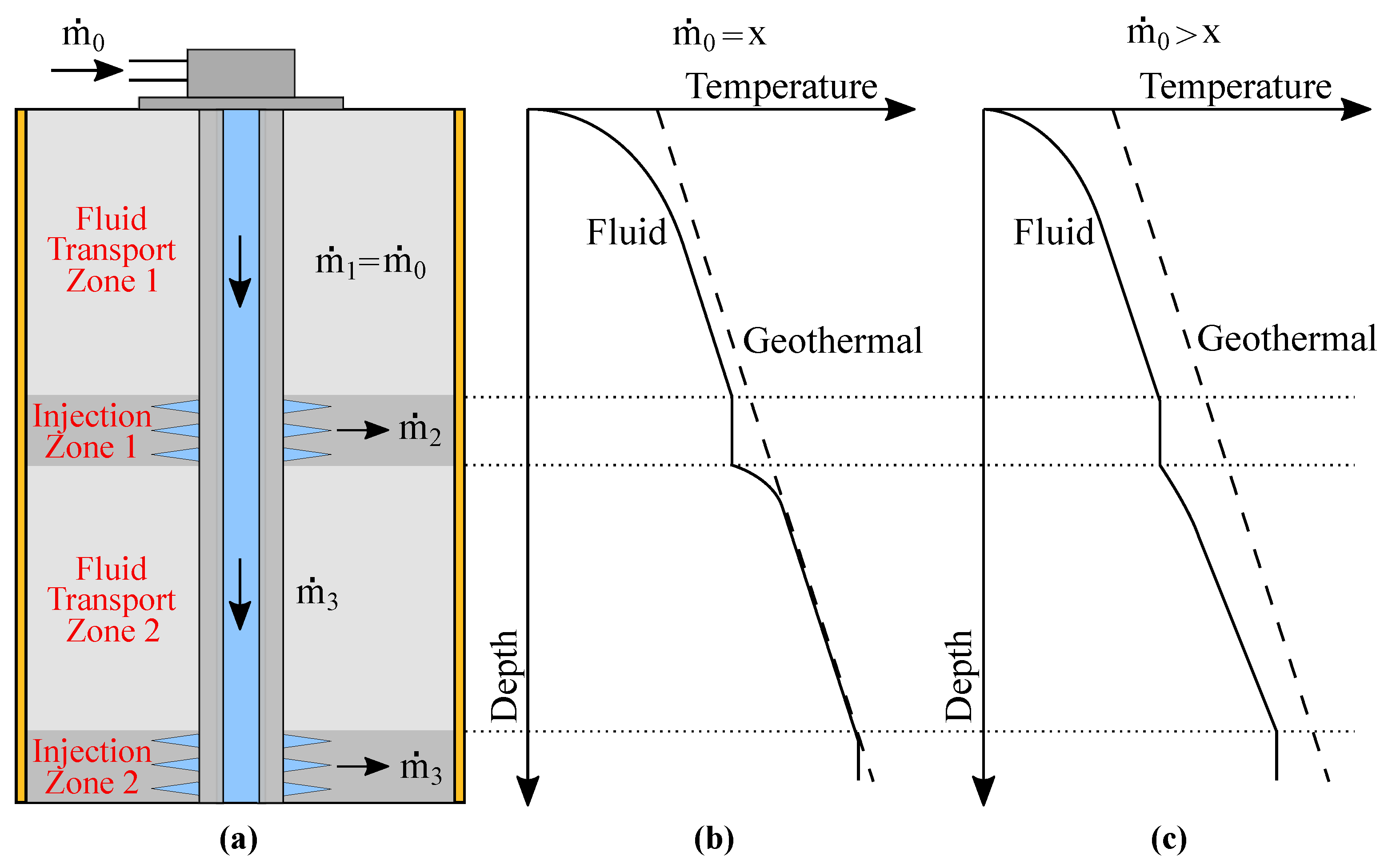


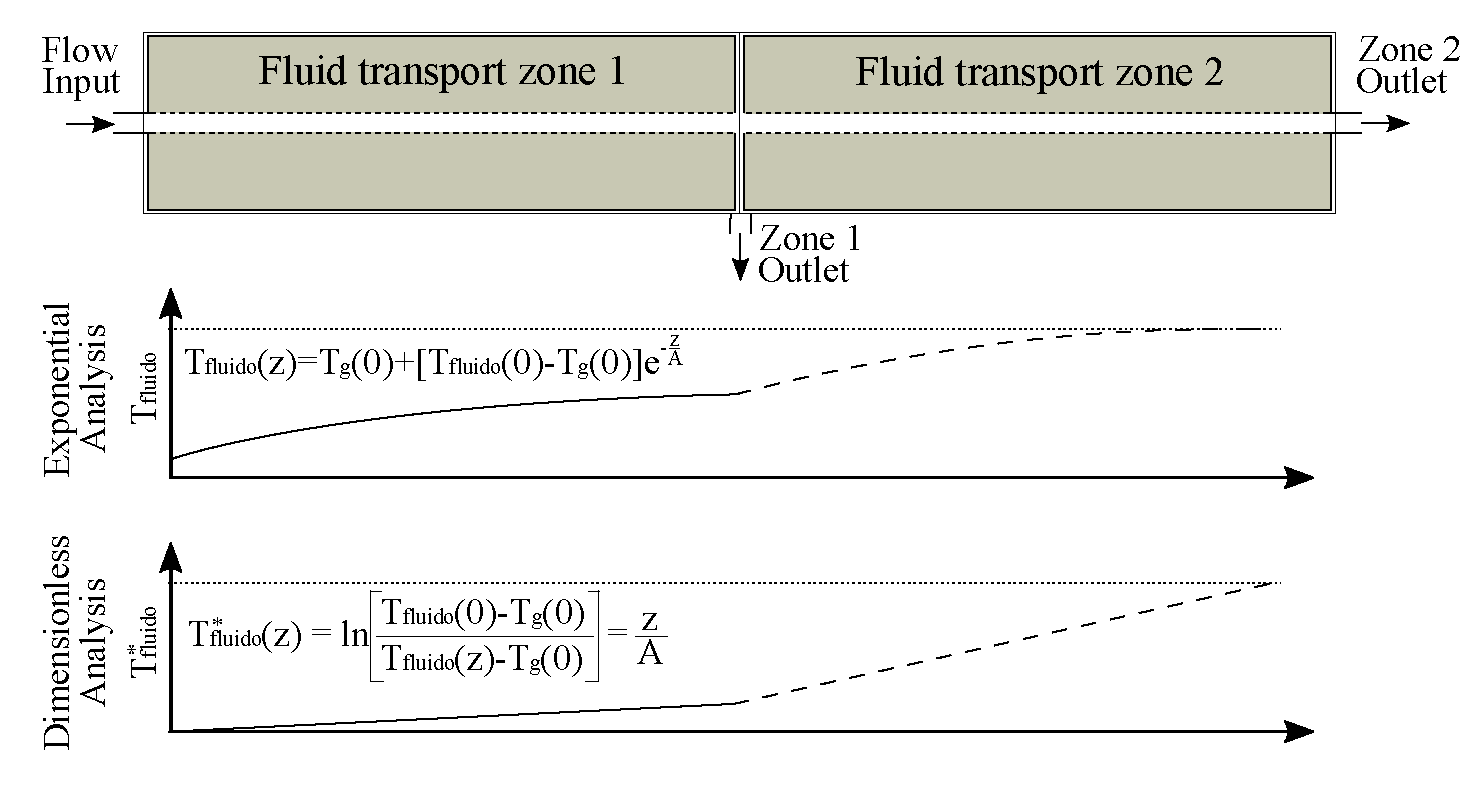




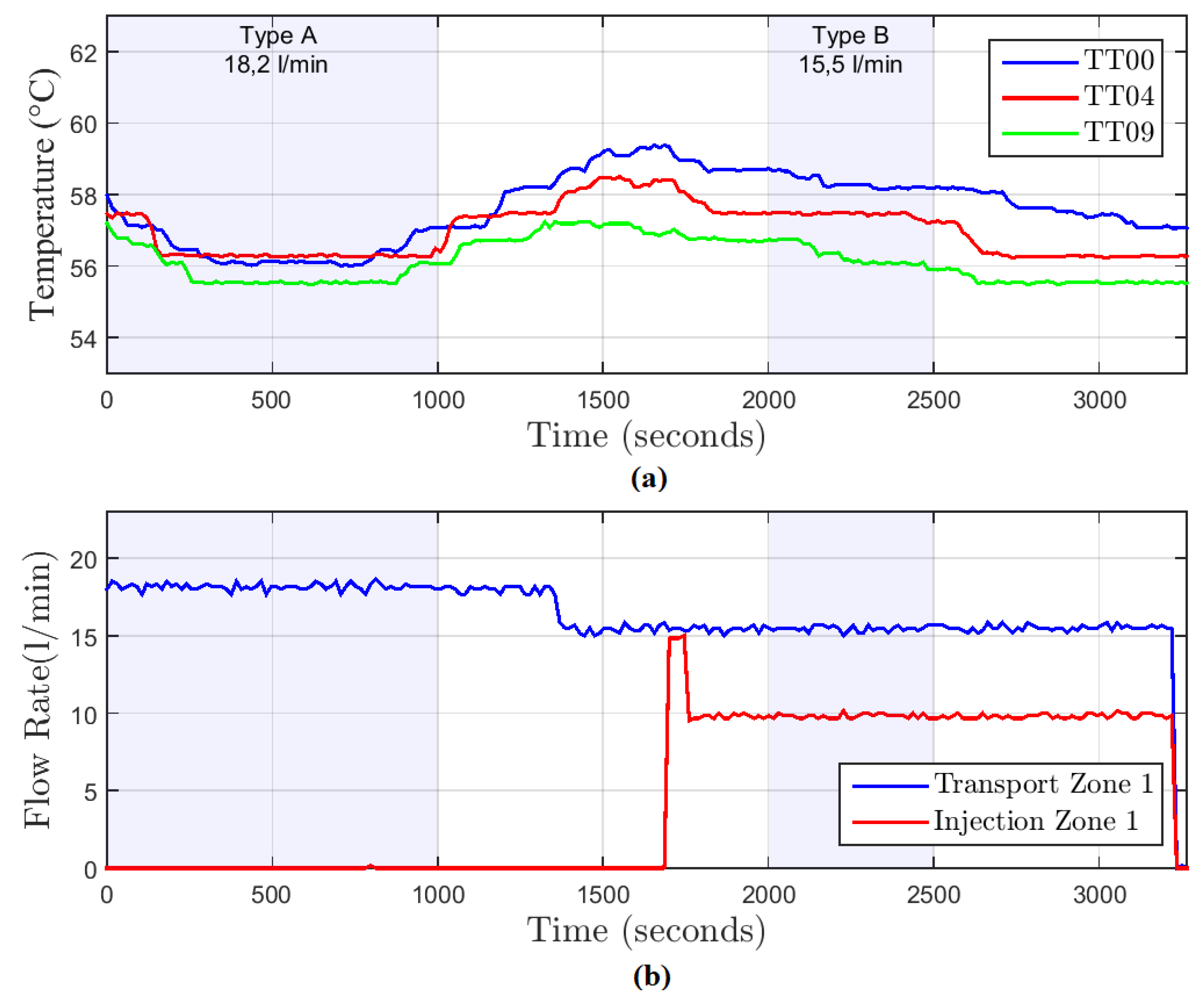
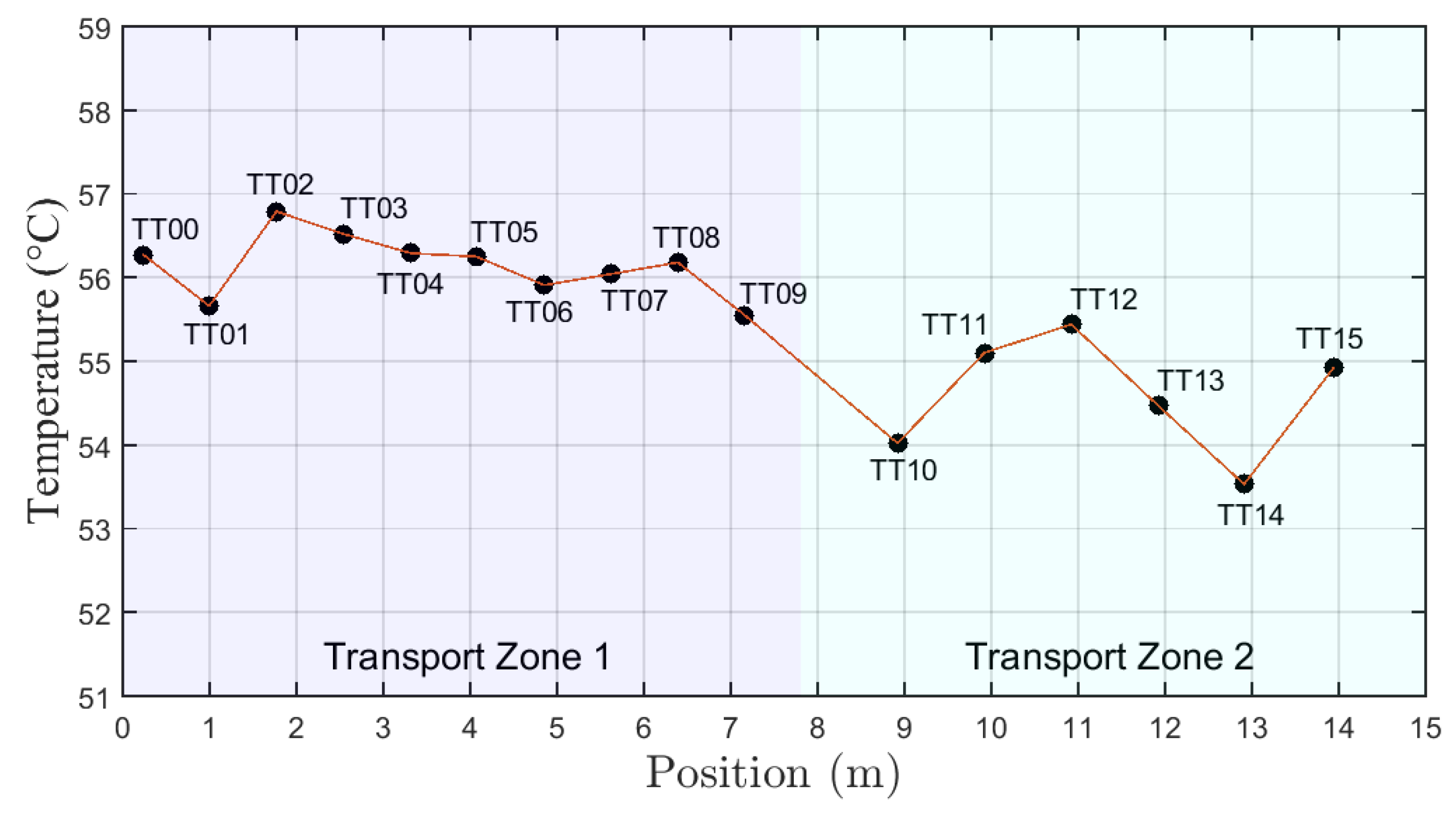

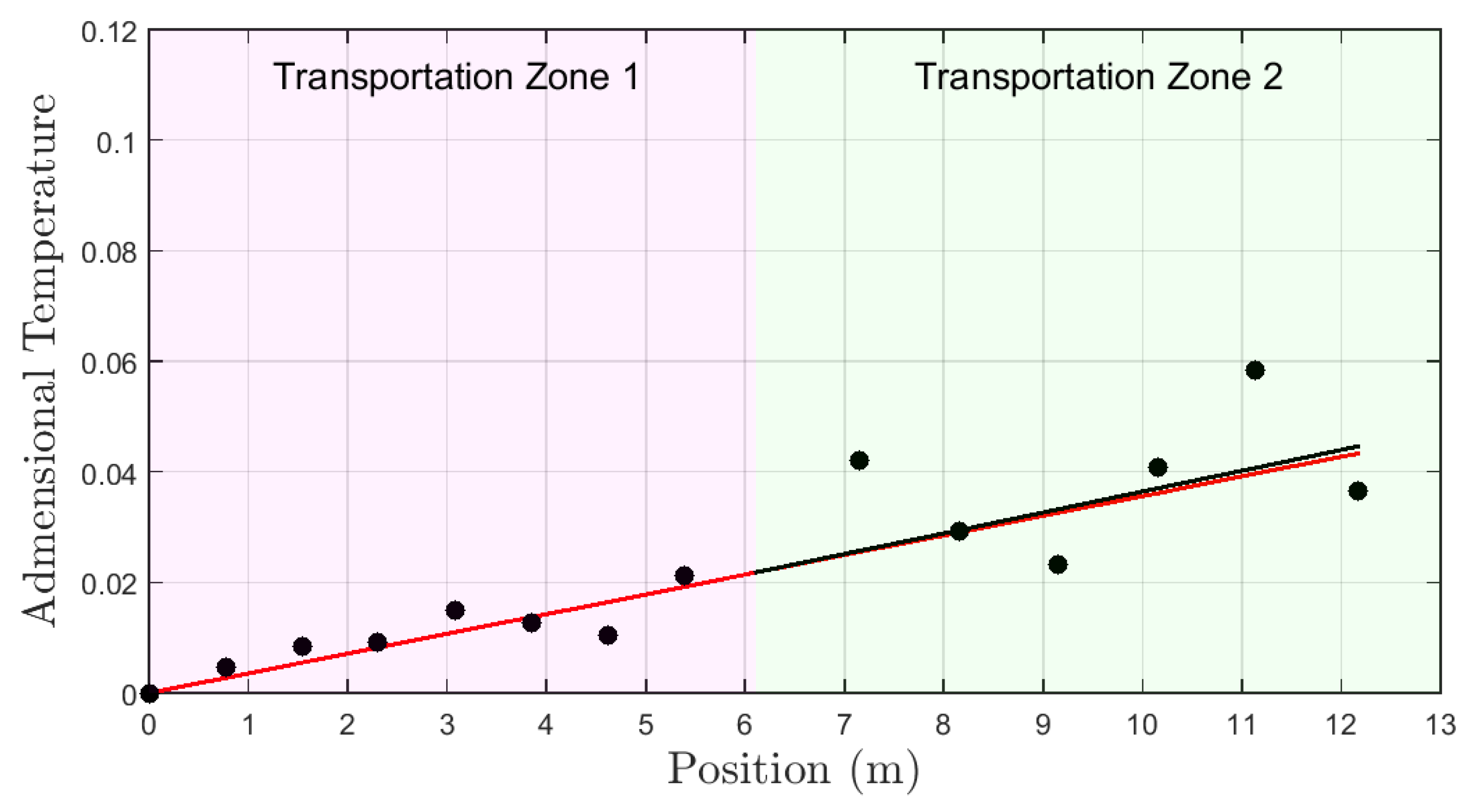


© 2019 by the authors. Licensee MDPI, Basel, Switzerland. This article is an open access article distributed under the terms and conditions of the Creative Commons Attribution (CC BY) license (http://creativecommons.org/licenses/by/4.0/).
Share and Cite
Silva, W.L.A.; Lima, V.S.; Fonseca, D.A.M.; Salazar, A.O.; Maitelli, C.W.S.P.; Echaiz E., G.A. Study of Flow Rate Measurements Derived from Temperature Profiles of an Emulated Well by a Laboratory Prototype. Sensors 2019, 19, 1498. https://doi.org/10.3390/s19071498
Silva WLA, Lima VS, Fonseca DAM, Salazar AO, Maitelli CWSP, Echaiz E. GA. Study of Flow Rate Measurements Derived from Temperature Profiles of an Emulated Well by a Laboratory Prototype. Sensors. 2019; 19(7):1498. https://doi.org/10.3390/s19071498
Chicago/Turabian StyleSilva, Werbet L. A., Verivan S. Lima, Diego A. M. Fonseca, Andrés O. Salazar, Carla W. S. P. Maitelli, and German A. Echaiz E. 2019. "Study of Flow Rate Measurements Derived from Temperature Profiles of an Emulated Well by a Laboratory Prototype" Sensors 19, no. 7: 1498. https://doi.org/10.3390/s19071498





